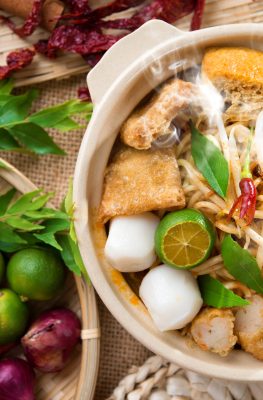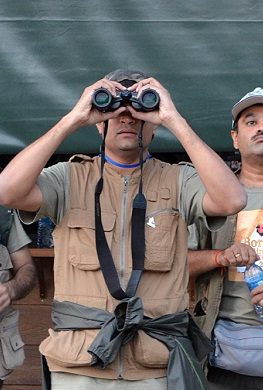Published on November 29, 2017
Chinatown street, Singapore. Image courtesy of the Singapore Tourism Board, used with permission.
As a bustling metropolis, Singapore is as diverse and multicultural as it gets. Enclaves for its major ethnic communities — namely, Chinese, Indian, Malay, and Peranakan — were integral in the Jackson Plan, an urban plan of the city that dates back to 1882.
You can book a guided tour of each enclave at their respective visitors’ centres. Here’s a thumbnail sketch of what to expect at each stop.
Quaint and eclectic, Singapore’s Chinatown has one foot each in heritage and the hip. It has chic hotels, trendy boutiques, the most happening restaurants, and kooky drinking holes sitting right next to its museums, temples, and historical attractions. Take a leisurely stroll to the Buddha Tooth Relic Temple; from there, Hindu temple Sri Mariamman and Jamae Mosque are close by.
Little India is its own bright riot of color across Chinatown. Known as Tekkai in the Tamil community, the enclave is a must-visit for the tourist looking to tuck into tasty Indian cuisine. Singapore’s largest indoor wet market, Tekka Centre, hawks rare and exotic ingredients.
Shopaholics can get great bargains on saris, jewelry, souvenirs, and scores of ethnic goods at Little India shophouses and at the Mustafa Centre, Singapore’s first 24-hour mall.
The Malay enclave, Kampong Glam, has a teeming shopping scene to boast of too. Located at the mouth of Rochor River, this former fishing village is now one of Singapore’s lifestyle hotspots.
Haji Lane is a trendy shopping and dining street for the more eclectic in taste; artful graffiti and murals adorn the quaint bistros, bars, and boutiques along the lane. Sultan Mosque stands proud at the epicentre of it all, a focal point where Singapore’s Muslim community comes together.
Finally, there’s Katong, a multicultural neighborhood home to the country’s Peranakans. Albeit largely suburban, the enclave reels in its share of tourists with distinct pre-war Chinese and colonial architecture. The two-story shophouses and eateries along Joo Chiat Road retain this look to this day.
A major avenue within the district, Joo Chiat is the place to visit for Peranakan souvenirs, handicrafts, fashion, and cuisine. Try the kueh chang, or Peranakan dumplings, or a bowl of Peranakan laksa, a spicy noodle soup flavored with coconut milk and dry shrimp. For a bit of history, drop by Katong Antique House, a restored Peranakan home decked with antiques and heirlooms.
Jalan Haji, Kampong Glam, Singapore. Image courtesy of the Singapore Tourism Board, used with permission.
Street near Sultan Mosque in Kampong Glam, Singapore. Image courtesy of the Singapore Tourism Board, used with permission.
hopping for sarees in Little India, Singapore. Image courtesy of the Singapore Tourism Board, used with permission.
Similar Southeast Asia Experiences
Southeast Asia’s major cities let you peek into the local culture without needing to travel far. Try visiting Brunei’s Bandar Seri Begawan; Cambodia’s Phnom Penh; Indonesia’s Jakarta; Kuala Lumpur in Malaysia; Thailand’s Bangkok; and Vietnam’s Hanoi.






